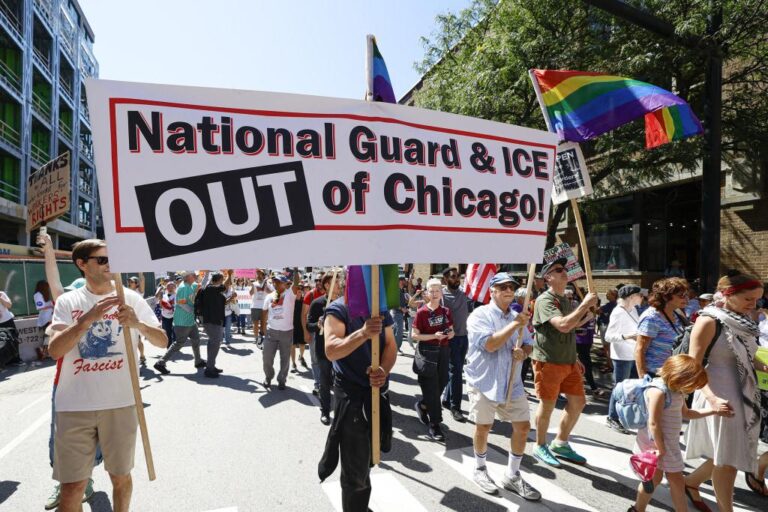Thousands of protesters are set to take to the streets across the United States as part of the ‚ÄúWorkers Over Billionaires‚ÄĚ movement, demanding economic justice and greater support for working-class Americans. Organized by labor unions and progressive groups, these demonstrations aim to highlight the widening wealth gap and call for policies that prioritize workers over the ultra-rich. This article provides an overview of where the protests will occur, the key messages driving the movement, and what participants and observers can expect in the coming days.
Locations and Key Venues for Workers Over Billionaires Protests
Demonstrations under the Workers Over Billionaires banner are set to ignite major cities across the United States this weekend, spotlighting economic inequality and labor rights. Key metropolitan hubs include New York City‚Äôs bustling Financial District, Chicago‚Äôs iconic Millennium Park, and Los Angeles’ Civic Center, all strategic choices designed to maximize visibility and impact. Protesters plan to converge at these high-profile locations to draw public attention to the gap between corporate wealth and worker wages.
Organizers have highlighted several critical venues where the movement will gain momentum, including:
- Wall Street Plaza, New York: The epicenter of American finance, symbolic for challenging billionaire dominance.
- Federal Plaza, Chicago: Offers direct engagement with government representatives and local officials.
- LA Civic Center: A historic platform for mass civic demonstrations and labor movements.
| City | Key Venue | Event Time |
|---|---|---|
| New York | Wall Street Plaza | 10:00 AM – 4:00 PM |
| Chicago | Federal Plaza | 11:00 AM – 5:00 PM |
| Los Angeles | LA Civic Center | 12:00 PM – 6:00 PM |
Mobilization Strategies and Expected Turnout Across Cities
Organizers behind the “Workers Over Billionaires” protests are deploying tailored mobilization strategies to maximize participation in key urban centers. In cities like New York, Chicago, and Los Angeles, grassroots networks are activating local unions, community groups, and social media influencers to galvanize workers across industries. Door-to-door canvassing, targeted digital campaigns, and coordinated public transport access initiatives are designed to ensure a diverse and substantial turnout. Authorities and event planners anticipate these efforts will help overcome typical barriers such as worker shift schedules and transportation limitations.
Expected turnout varies significantly across metropolitan areas, influenced by factors such as local political climate and economic conditions. Below is a snapshot of anticipated numbers and prime mobilization tactics employed in major cities:
| City | Expected Turnout | Key Mobilization Strategy |
|---|---|---|
| New York | 15,000+ | Union-led mass meetings and social media blitz |
| Chicago | 8,000-10,000 | Community walkabouts and partnership with local nonprofits |
| Los Angeles | 12,000+ | Multi-lingual outreach and public transit promotions |
| Seattle | 5,000-7,000 | Targeted digital ads and worker-led organizing committees |
| Detroit | 4,000-6,000 | Faith-based coalition-building and info sessions |
Demands and Objectives Shaping the Protest Movement
The “Workers Over Billionaires” protest movement is driven by urgent calls for systemic change in wealth distribution and labor rights across the United States. Participants demand fair wages, universal healthcare access, and stronger labor protections, arguing that the concentration of wealth among billionaires exacerbates economic inequality and undermines democratic values. Protest organizers emphasize that addressing these issues is critical to creating an economy that works for all, not just the ultra-wealthy.
Key objectives highlighted by the movement include:
- Implementing a progressive tax system that holds the richest accountable
- Raising the federal minimum wage to a livable standard
- Expanding union rights to empower workers in every sector
- Ensuring affordable housing and education for all citizens
| Demands | Goals |
|---|---|
| Tax billionaires fairly | Reduce wealth inequality |
| Minimum wage hike | Lift workers out of poverty |
| Union empowerment | Protect labor rights |
| Universal healthcare | Ensure basic health access |
How to Participate Safely and Effectively in the Demonstrations
To engage meaningfully in the upcoming protests, prioritize your personal safety by planning ahead. Wear comfortable, weather-appropriate clothing and sturdy shoes; bring essentials like water, snacks, and a basic first aid kit. Keep your phone charged and consider sharing your location with a trusted contact. Avoid carrying valuables and consider using cash instead of cards for purchases. Familiarize yourself with the route, entry and exit points, and locations of nearby public facilities. Stay aware of your surroundings and respect the instructions of event marshals and law enforcement.
Effective participation also involves clear communication and staying informed. Use social media and official protest channels for real-time updates. Form small, organized groups to maintain cohesion and support. Practice nonviolent tactics and be prepared to de-escalate tensions whenever possible. Below is a quick reference table of key dos and don’ts to guide your demonstration experience:
| Do | Don’t |
|---|---|
| Bring ID and emergency contacts | Carry weapons or illegal substances |
| Stay hydrated and take breaks | Engage in aggressive behavior |
| Inform someone of your plans | Block emergency access routes |
| Follow legal guidelines and instructions | Ignore crowd control warnings |
To Wrap It Up
As the “Workers Over Billionaires” protests gain momentum across the country, cities from coast to coast are preparing for demonstrations aimed at highlighting income inequality and demanding fairer economic policies. With events scheduled in major urban centers including New York, Los Angeles, Chicago, and Washington, D.C., organizers hope to draw widespread attention to the growing divide between the ultra-wealthy and everyday workers. As the protests unfold, all eyes will be on how participants, officials, and the public respond to this renewed call for economic justice. Stay tuned for ongoing coverage as this grassroots movement continues to develop.







